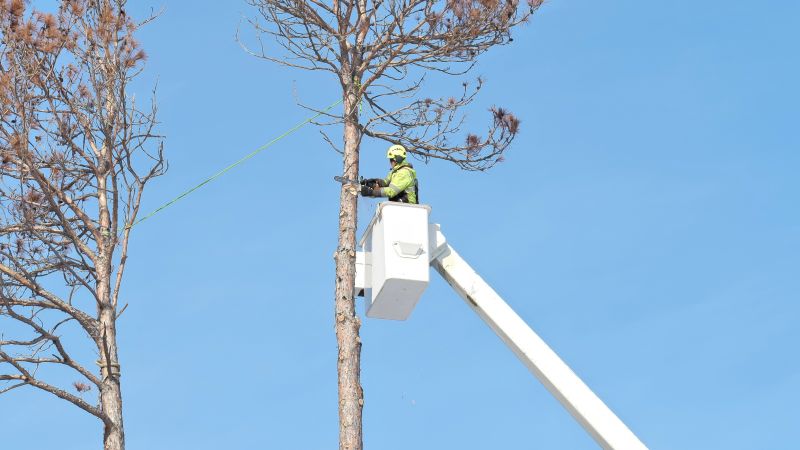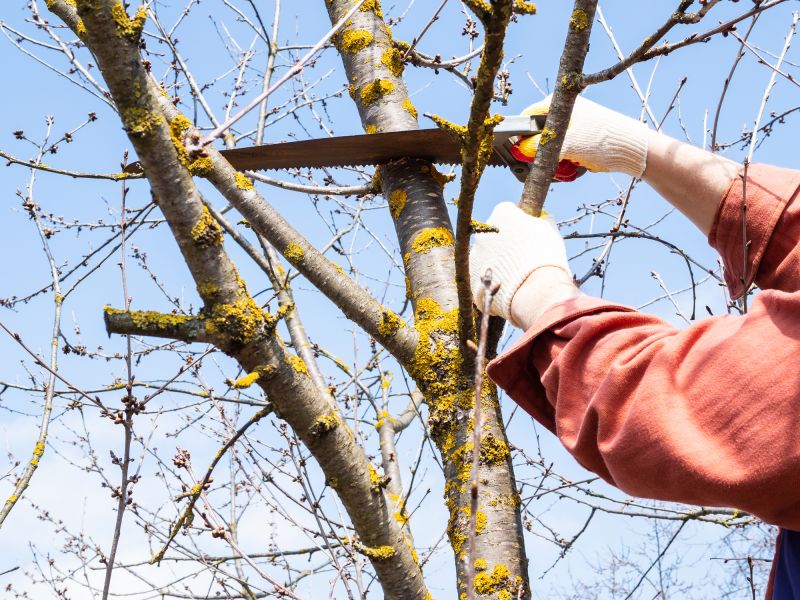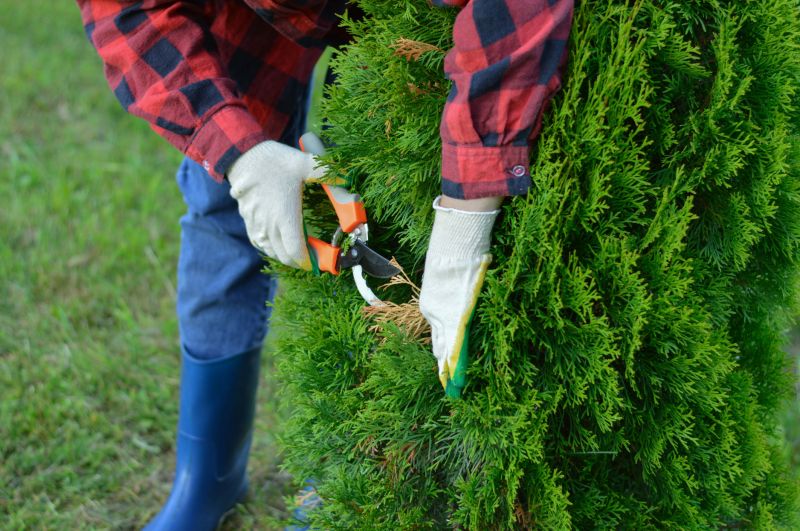Get Arborist Inspection in Stamford, CT
Arborist Inspection services help Stamford property owners identify tree hazards, assess health, and plan safe removal or maintenance projects with experienced local contractors.
Property owners in Stamford, CT, who are considering tree-related projects often find it helpful to start with an expert assessment. Arborist inspection services provide valuable insights into the health, stability, and overall condition of trees on a property. Whether planning for landscape improvements, safety concerns, or future maintenance, having a professional evaluation can help inform practical decisions and ensure the long-term well-being of trees and surrounding structures.
Exploring options among nearby service providers allows property owners to compare approaches and find the right fit for their needs. Local contractors specializing in arborist inspections are equipped to address a variety of concerns, from identifying potential hazards to assessing the impact of storms or pests. Keep reading to learn how connecting with experienced professionals can support your property planning and maintenance efforts.
- Tree Risk Assessments - needed when property owners in Stamford neighborhoods want to identify potential hazards from overgrown or damaged trees.
- Storm Damage Inspections - essential after severe weather events to evaluate tree stability and prevent further damage.
- Health and Stability Checks - recommended for mature trees showing signs of disease or structural issues in residential or commercial areas.
- Pre-Construction Tree Evaluations - required before construction projects to determine which trees can be preserved or need removal.
- Periodic Tree Condition Reviews - helpful for property managers seeking ongoing assessments of tree health and safety in local parks or estates.



Arborist inspection services involve a thorough assessment of trees on residential or commercial properties to evaluate their health, stability, and overall condition. These inspections typically include examining the tree’s structure, roots, and canopy to identify any signs of disease, decay, pest infestations, or structural weaknesses. The goal is to detect potential hazards early, helping property owners prevent damage or injury caused by falling branches or trees. Professional arborists use specialized knowledge and tools to provide detailed reports that can guide maintenance decisions or necessary interventions.
These services are particularly valuable when addressing specific problems such as dead or dying branches, leaning trees, or visible cracks and splits in the trunk. They can also help identify signs of root damage, fungal infections, or pest activity that might compromise a tree’s stability over time. By catching issues before they become urgent, arborist inspections enable property owners to plan appropriate treatments or removals, reducing the risk of unexpected damage during storms or high winds. This proactive approach can save money and ensure the safety of everyone on the property.
Property types that commonly utilize arborist inspection services include single-family homes, multi-unit residential buildings, commercial complexes, and public parks. Homeowners often seek inspections when planning landscape updates, noticing unusual tree behavior, or preparing for severe weather seasons. Commercial property managers may request evaluations to maintain safety standards and prevent liability issues. Public parks and community spaces also benefit from regular inspections to keep trees healthy and safe for visitors. These services are suitable for any property where trees are a prominent feature and require ongoing care or assessment.
Homeowners and property managers should consider arborist inspection services when they observe signs of tree distress, such as dead limbs, cracks, or leaning structures, or if they notice changes in a tree’s appearance. Inspections can also be helpful before undertaking construction projects that may impact root systems or require tree removal. By partnering with experienced local contractors, property owners can gain peace of mind knowing that their trees are being properly evaluated and maintained. Contacting a qualified arborist can provide valuable insights into tree health and help determine the best course of action to keep properties safe and attractive.
The overview below groups typical Arborist Inspection projects into broad ranges so you can see how smaller, mid-sized, and larger jobs often compare in Stamford, CT.
In many markets, a large share of routine jobs stays in the lower and middle ranges, while only a smaller percentage of projects moves into the highest bands when the work is more complex or site conditions are harder than average.
Small Tree Inspections - Typically range from $150-$400 for routine assessments of individual trees or small groups. Many standard inspections fall within this range, especially for straightforward evaluations of healthy trees.
Moderate Tree Assessments - Usually cost between $400-$1,200 for more detailed inspections of larger trees or multiple specimens. These projects are common for property owners seeking comprehensive evaluations.
Large or Complex Inspections - Can range from $1,200-$3,000+ for extensive assessments involving multiple trees, high-risk locations, or detailed reports. Fewer projects reach into this higher tier, often for urgent or high-value trees.
Full Tree Health Evaluations - Larger, more comprehensive inspections can exceed $3,000 for extensive analysis and detailed reporting, typically reserved for high-value or hazardous trees requiring in-depth study.
Actual totals will depend on details like access to the work area, the scope of the project, and the materials selected, so use these as general starting points rather than exact figures.
Tree Risk Assessment - local contractors evaluate the stability and health of trees to identify potential hazards similar to arborist inspections.
Urban Forestry Planning - professionals develop management plans for city trees, requiring detailed site evaluations and planning skills akin to arborist inspections.
Tree Preservation Surveys - experts conduct surveys to determine the impact of construction projects on existing trees, involving careful inspection and planning processes.
Storm Damage Assessment - service providers assess fallen or damaged trees after storms, utilizing inspection techniques comparable to arborist evaluations.
Landscape Tree Inspection - local pros assess trees within landscapes to ensure health and safety, employing similar tools and inspection methods.
Utility Line Clearance Checks - contractors inspect trees near utility lines to prevent interference, requiring detailed visual assessments like arborist inspections.

When evaluating arborist inspection services, it’s important to consider the experience of local contractors with similar projects. Homeowners should look for service providers who have a proven track record in assessing trees and landscapes comparable to their own property. This can help ensure that the arborist has the practical knowledge needed to identify potential issues accurately and recommend appropriate actions. Checking whether a contractor has worked on properties similar in size, tree types, or landscape features can provide confidence that they understand the specific challenges and requirements of the job.
Clear, written expectations are essential for a smooth and transparent process. Homeowners should seek out service providers who can articulate their scope of work, the methods they will use, and what the inspection will cover in straightforward terms. Having this information in writing helps prevent misunderstandings and ensures everyone is aligned on the project’s goals. It’s also helpful to ask for detailed descriptions of the inspection process and any follow-up recommendations, so that expectations are well-defined from the outset.
Reputable references and strong communication skills are key indicators of a reliable arborist inspection service. Homeowners are encouraged to request references from previous clients who had similar projects completed. These references can offer insights into the quality of work, professionalism, and responsiveness of the service provider. Additionally, good communication-whether through prompt responses, clarity in explanations, or willingness to answer questions-can make the entire process more manageable. While the site introduces homeowners to local options, it’s important to remember that the actual work is performed by trusted local contractors who can handle the inspection and any subsequent recommendations.
Property owners in Stamford, CT use Arborist Inspection services for practical projects around their homes and businesses. This guide focuses on everyday jobs and straightforward project options.


Arborist inspection services are often sought by property owners in Stamford, CT when concerns arise about the health or stability of mature trees on their property. Whether there are signs of disease, pest infestations, or structural issues, local contractors can assess the condition of trees to determine if they pose a risk to nearby structures or passersby. These inspections can help homeowners make informed decisions about tree maintenance, removal, or treatment to ensure safety and preserve the landscape.
Additionally, property owners may look for arborist inspections before undertaking larger projects such as construction, landscaping, or lot clearing. Ensuring that trees are healthy and stable can prevent unexpected damage during development activities. Local service providers can identify potential hazards, recommend appropriate actions, and help maintain the safety and integrity of trees within residential or commercial properties in Stamford, CT.
What is an arborist inspection? An arborist inspection involves a professional evaluating the health, structure, and safety of trees on a property to identify potential issues or hazards.
Why should I consider an arborist inspection? An inspection can help detect signs of disease, decay, or structural weaknesses that may require maintenance or removal to prevent damage or safety risks.
How do I find qualified service providers for arborist inspections? Local contractors specializing in tree assessments can be contacted through lead generation platforms to compare options and connect with experienced professionals.
What types of trees can be evaluated during an inspection? Arborist inspections can be performed on a variety of trees, including mature, young, or problematic specimens, to assess their condition and stability.
What should I expect during an arborist inspection? A professional will examine the tree’s overall health, look for signs of disease or pests, assess structural integrity, and recommend any necessary actions.
Tree Health Assessment - Property owners can identify signs of disease or decay in their trees to prevent potential hazards or damage.
Risk Evaluation for Large Trees - Homeowners with mature or leaning trees can use inspections to determine if removal or pruning is necessary for safety.
Storm Damage Inspection - After severe weather, property owners can have local contractors evaluate trees for damage that might pose risks during future storms.
Maintenance Planning - Regular inspections help property owners plan pruning or care to maintain healthy, attractive trees around their homes.

If you are thinking about Arborist Inspection for a property in Stamford, CT, this guide is meant to help you understand the work, the typical project types, and how different options might fit your plans.
When you are ready, you can use the quote form on this page to share a few details about your project. From there, local pros can review the basics and respond with options that match what you have in mind.
